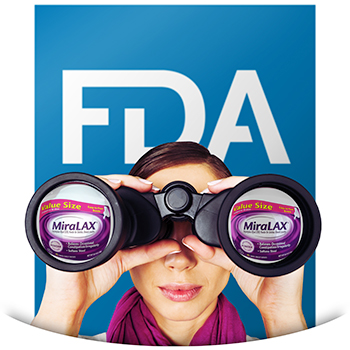
Is Miralax safe for our children? Major concerns have surfaced that indicate otherwise.
As of March 2012, the FDA’s Adverse Event Reporting System showed 2,257 incidents involving polyethylene glycol 3350, or simply PEG, the active ingredient in Miralax (a Bayer product) according to a consumer group based in New York. These incidents included serious kidney, urinary, bowel, blood, skin, and neuropsychiatric symptoms – and at least three child fatalities. Other laxatives containing PEG are Movicol, SoftLax, ClearLAX, Osmolax and GlycoLax.
The FDA itself has noted since 2009 that laxatives containing PEG have been related to neuropsychiatric events, including development of tremors, tics and obsessive-compulsive behaviors in children.
Yet the FDA is only now trying to answer the question “Is Miralax safe for children?” The agency has given the Children’s Hospital of Philadelphia a $350,000 grant to gather some real data to help answer questions, specifically:
- How much PEG might be absorbed by the intestines of the very young?
- Is the use of PEG linked to the development of psychiatric problems in children?
The “Off-Label Limbo” Skirts the Rules
Miralax is an adult laxative that has been around for 13 years. According to the media, it has emerged as a hugely popular drug treatment for constipated children, often given to them on a daily basis, for years. This despite the fact it was never approved for children, and even adults are only supposed to take it for seven days, no longer.
So what can explain the evolution of laxatives like Miralax and others containing PEG morphing from a short-use adult-only drug to children swigging it daily? I call it the “off-label limbo” – that’s the dance in which a pharmaceutical company keeps lowering the prescribing bar until doctors feel comfortable jumping over it. As an experienced personal injury lawyer I’ve seen a lot of drug firms do this dance.
In the case of Miralax and PEG, the drug makers started selling doctors on the idea that PEG couldn’t hurt children because not enough of it got absorbed into their colons. But did they have proof of that? No.
What they did have proof of was this: if they convinced doctors to prescribe PEG-laced laxatives to children, it would double their market.
A look at Miralax labels then and now shows how easily prescribing restrictions can vanish. In 1999, when the FDA approved it, the label warned “Miralax should not be used by children.” The label today reads simply, “Children 16 years of age or younger: ask a doctor.”
What finally got the FDA to act on Miralax et. al. is a lot of yelling by parents. This caught the attention of the Empire State Consumer Project in Rochester, NY., which then submitted a petition to the FDA. The group wants a recall and, at the very least, a black box warning on the laxatives about their potential risk to children.
Given the stakes, is that too much to ask until more facts are known? I don’t think so.
